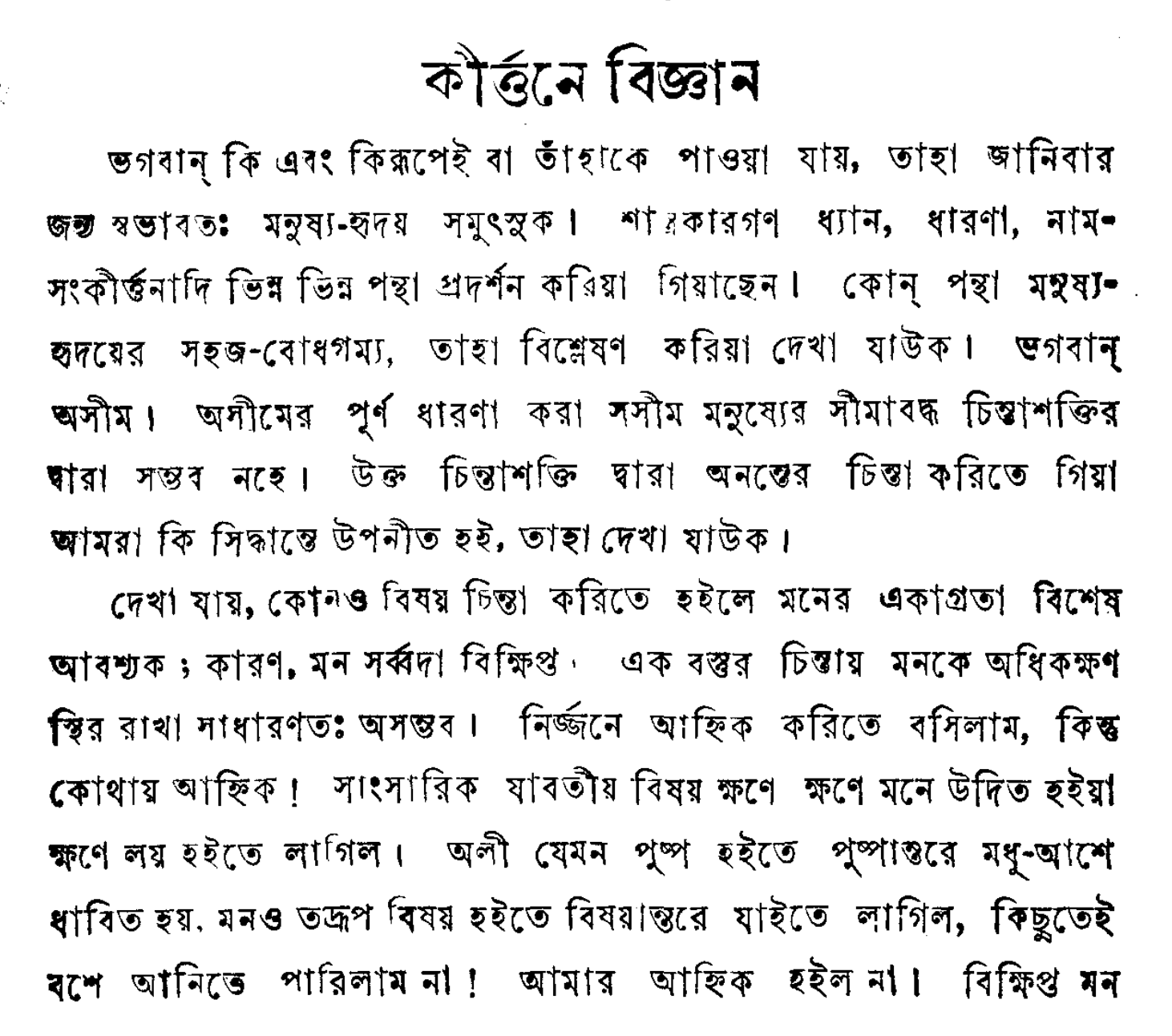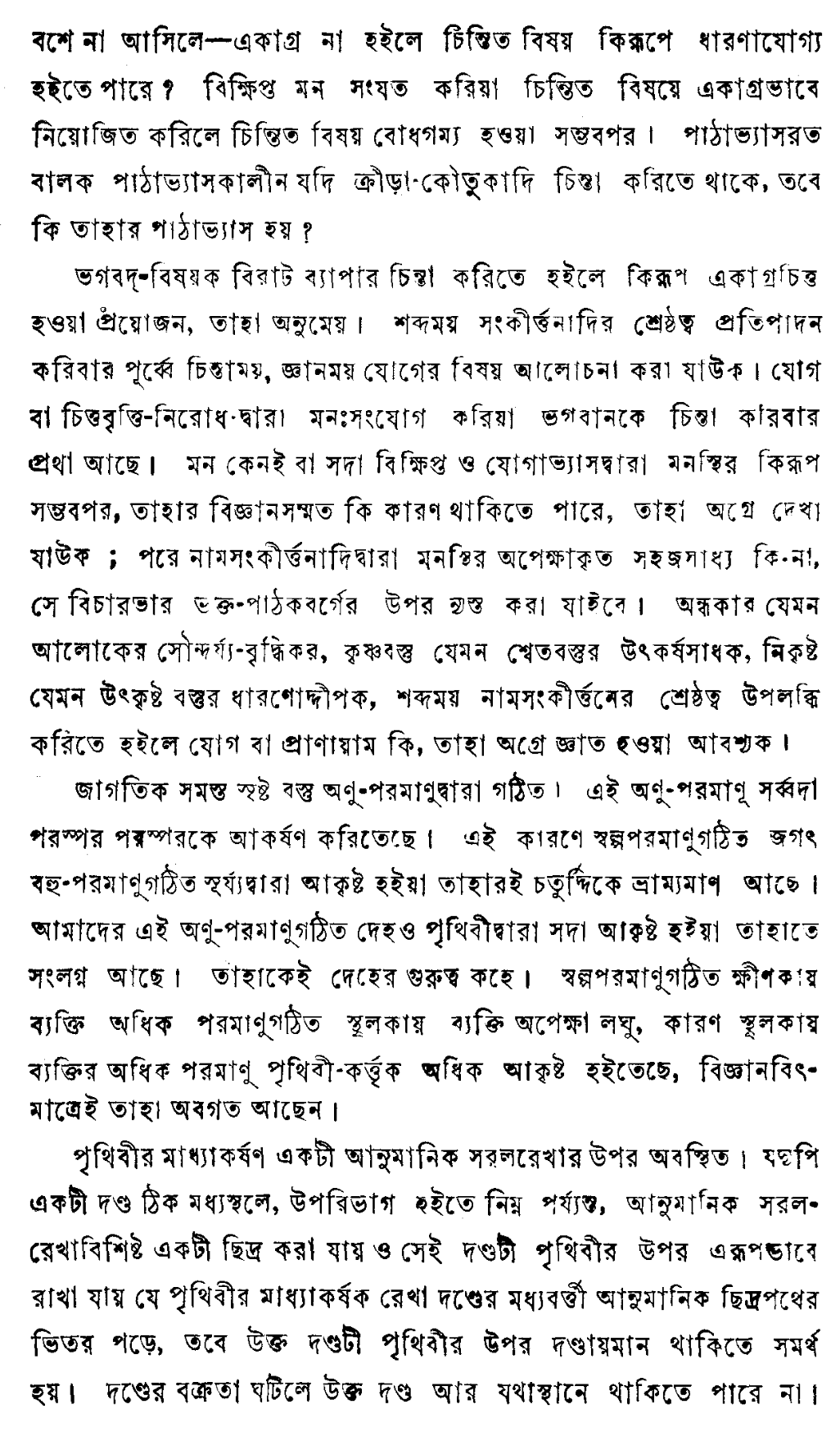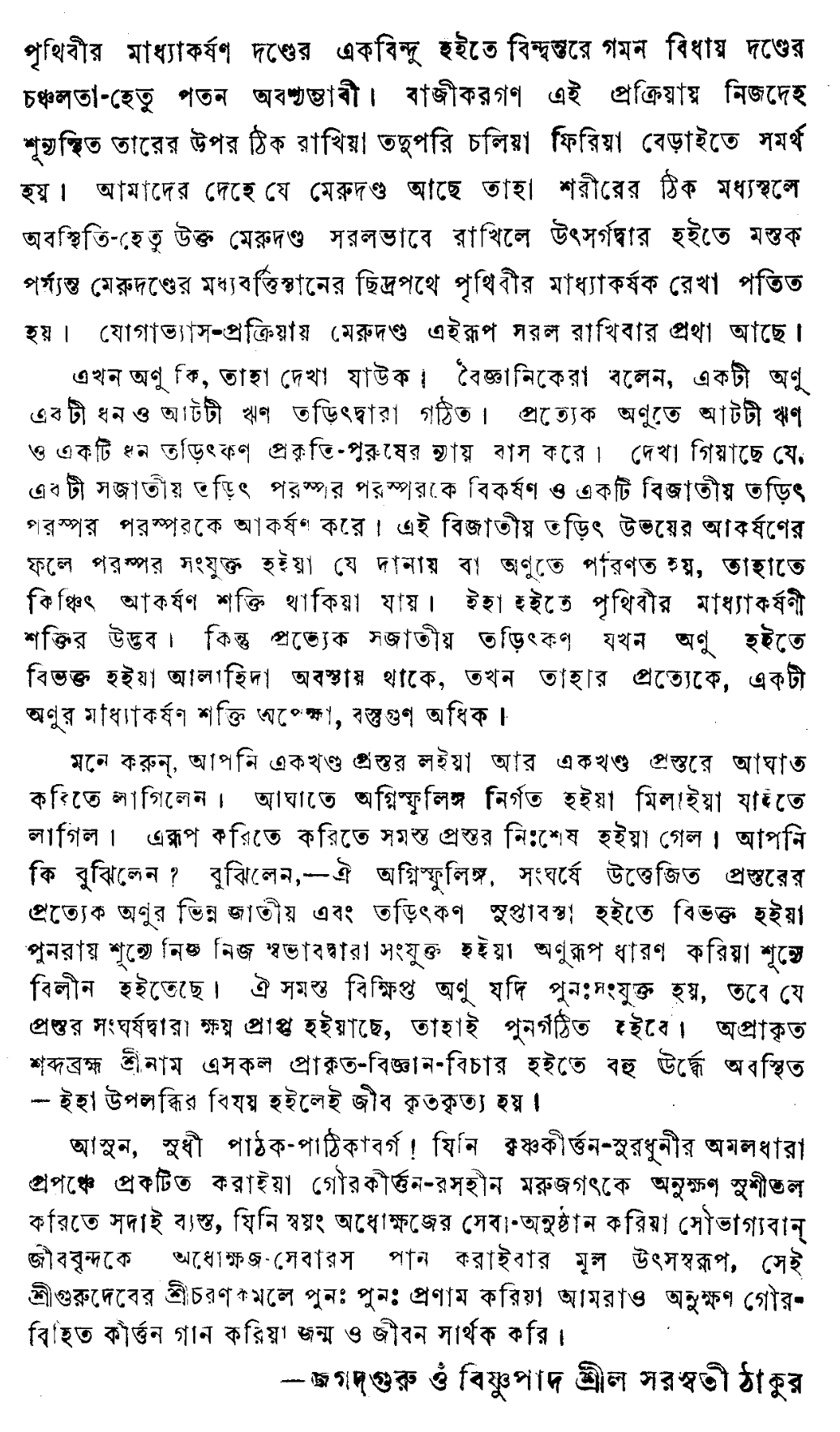Kīrtane Vijñāna - The Science in Kīrtana

The human heart is naturally eager to know what God is and how to attain Him. Authors of scripture have come and gone, having shown various paths like dhyāna [meditation], dhāraṇā [holding of prāṇa in a specific cakra], nāma-saṅkīrtana [chanting of God’s names], etc. Let us see from analysis which path is most appealing to the human heart. Bhagavān is without limit. To conceive of the limitless is not possible for limited man and his limited power of thought. Let us see what conclusion we arrive at by contemplating the infinite with this kind of capacity for thought.
We see that if we have to contemplate something, we really need the mind to have one-pointed focus; because the mind is always scattered. Generally, it is impossible to keep the mind steadied on one thing for too long. I sat to do āhnika in seclusion, but what happened to my āhnika! Every topic in the world started popping into my head and flitting to the next with each passing second. Like a bee rushing from one flower to another for honey, my mind began to flit from one sense object to the next. I could not bring it under control, no matter how I tried! My āhnika just did not happen.
If the scattered mind can’t come under control—if it can’t focus, how can one grasp what one is thinking about? If the scattered mind can be tamed and applied with singular focus to the object of contemplation, then whatever one is thinking about can be comprehensible. If a child in school is simply thinking about playing and having fun while he is studying, will he be able to study?
It can be easily inferred just how much focus of attention is needed to contemplate the vast subject of God. Before establishing the supremacy of resonant congregational chanting, let us discuss the yogas of contemplation and knowledge. There is a process of contemplating God through yoga, or by bringing cohesion to the mind by checking its oscillations. Let us first see what scientific reasons there may be as to why the mind is always scattered and how it is possible to steady the mind by the practice of yoga. After that, the readers will be entrusted with the burden of deciding whether or not it is easier to steady the mind by chanting God’s holy names and the like.
As darkness augments the beauty of light, as a dark object enhances a light object, as that which is lowly or inferior kindles understanding of that which is most excellent, it is first necessary to understand what yoga and prāṇāyāma are, if one is to appreciate the superiority of loud, resonant chanting of God’s holy names.
All created objects in this world are comprised of atomic and sub-atomic particles. These atomic particles are always drawn to each other. This is why the Earth, which is composed of fewer atoms, is drawn to the greater atomic mass of the Sun and is in orbit around the Sun. These bodies of ours, which are also composed of atomic particles, are always drawn to the Earth and remain fixed to it. That is called physical gravity. A thin person, whose figure contains fewer atoms, is lighter than a large-bodied person, whose body contains more atoms, because the greater amount of atoms in a heavy-bodied person are being drawn more to the Earth. Anyone who knows science is familiar with this.
Earth’s gravity functions in a more or less straight line. Suppose a stick has a hole drilled in a straight line through the middle of it, from top to bottom, and that stick is stood upon the ground so that the Earth’s gravitational pull falls within that channel running through the center of the stick. That stick will stay standing upright on the Earth without any support. But not if it is crooked. And if the gravitational pull of the Earth strays a hair in any direction, the stick will become unstable and fall over. Stunt artists utilize this principle. Keeping their bodies poised perfectly atop a wire stretched over a void, they are able to cross back and forth across it. The spinal column we have in our bodies is situated at the perfect center of our bodies, so if we keep our spines straight, the Earth’s gravitational force falls within the space that runs from the base of the spine to the top of our heads. This is how the spine is kept straight in the practice of yoga.
Now let us see what an aṇu [atom] is. Scientists say that an aṇu is made of a dhana [“positive charge” or the protons and neutrons of the nucleus] and eight ṛiṇa [electrons, which are negatively charged]. In every aṇu, these energetic particles, one nucleus and eight electrons, coexist like prakṛti and puruṣa [male and female counterparts]. It has been observed that similar electrical charges push each other apart, while opposite charges attract each other. Because of the attraction between opposite charges, they combine to form a particle, or atom, that has some attractive power of its own. This is where the Earth’s gravitational force comes from. But when similarly charged electrons are separated from the atom, they each develop more potential energy compared to the gravitational energy of a single atom.
Suppose you took a piece of stone and started smashing it against another piece of stone. From the striking of these stones, sparks began to emanate and mingle. As you carried on like this, all the stone became disintegrated. What have you understood? You have understood that these sparks of fire are different from each of the atoms in the stones that have been agitated by friction, and that the electrons therein have been separated from a dormant state [from the iron atoms] and again brought together in a śūnya [open space], and then disappeared again, still in atomic form. If all these agitated particles were to come together again, then the stones that were disintegrated by friction would be reconstituted.
The supramundane Śabda-brahma (divine word) that is Śrī Nāma is so far above all these conceptions of material science. The living entities can only become kṛta-kṛtya (fulfilled) if they realize this fact.
Come, beautifully wise readers, gentlemen and ladies! Śrī Gurudeva has manifested the immaculate current of the Suradhunī (celestial Ganges) of kṛṣṇa-kīrtana in this material world and is forever preoccupied with cooling this desert-like world that is bereft of the rasa of gaura-kīrtana. He conducts the service of Adhokṣaja (the Lord who is beyond all sense perception) and is the main fountainhead that allows fortunate souls to drink the rasa of service to Adhokṣaja. Offering our obeisance again and again at His lotus feet, we too will make our births and our lives successful by singing kīrtana as prescribed by Śrī Gaurasundara.
—Jagad-guru Oṁ Viṣṇupāda Śrīla Sarasvatī Ṭhākura



